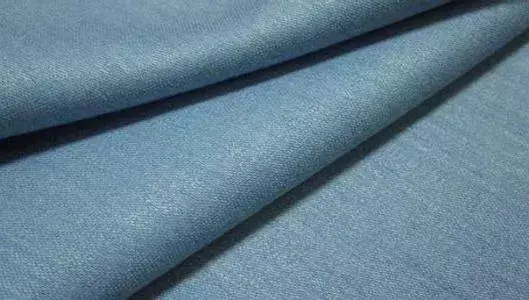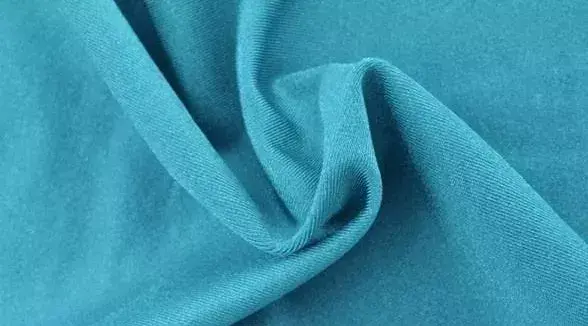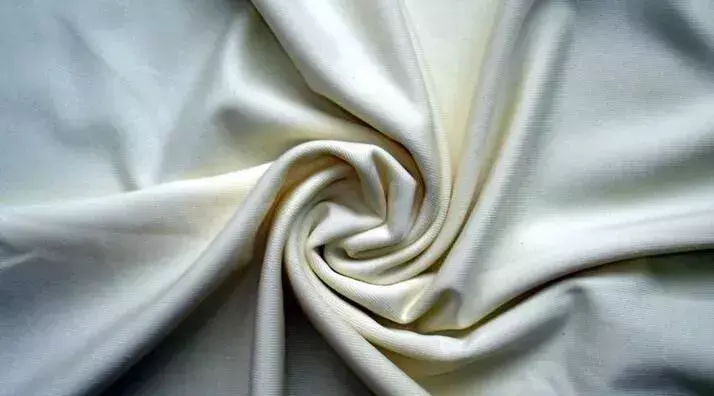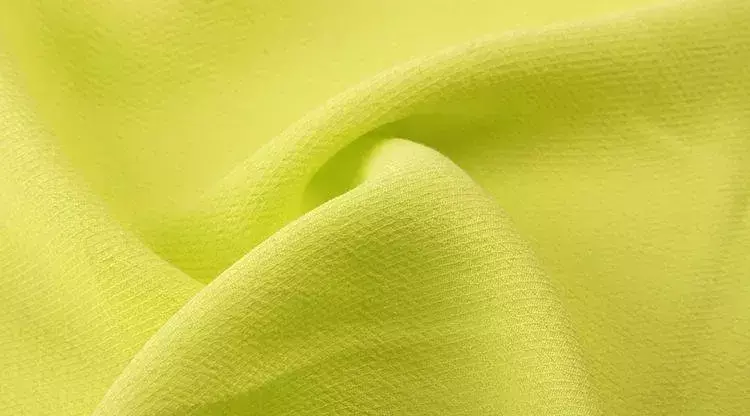1. Introduction to raw materials
Properties of polyester (PET):
1. Strong wear resistance.
2. Poor water absorption, with a public moisture regain rate of 0.4% (20°C, relative humidity 65%, 100g polyester absorbs 0.4g water).
3. It is easy to generate static electricity, easy to fluff and pill.
4. Acid-resistant but not alkali-resistant. Note: A certain concentration of alkali will destroy the surface of polyester at a certain temperature and make the fabric feel soft.
5. Corrosion resistance and light resistance are relatively good.
6. Fabrics made of polyester fiber are not easy to wrinkle, have good dimensional stability, are easy to wash and dry quickly.

Polyester spinning form:
1. FDY (filament): The single fibers are parallel, smooth and uniform, divided into glossy, glossy, semi-glossy, matt, and the brightness is getting weaker and weaker.
2. DTY (elastic yarn): Single fiber bending, low stretch, fluffy shape.
3. DTY network yarn (low elasticity network yarn): There are network points in stages to increase the bundling ability between fibers. It is divided into no mesh, light mesh, medium mesh and heavy mesh, among which the heavy mesh can be used as starch-free silk. Generally, FDY and DTY must be sized or twisted before they can be used as warp threads.
Sizing: Increase the strength of silk threads; obtain cohesion between fibers; make the fiber surface smooth and facilitate weaving.
Twisting: Increase strength; increase the cohesion between fibers; give the fabric a crepe effect.
Twist: (T) The number of twists of silk thread per centimeter.
0-10 T/CM weak twist 10-20 T/CM medium twist 20 T/CM strong twist
4. POY (pre-oriented yarn): extensible but not returnable It is elastic and cannot be used as warp or weft alone. It must be combined with other yarns and can be stretched 1.6 times. POY yarn is a semi-finished product of low-elastic network yarn. Typical fabric: washed velvet.
5. ATY (air textured yarn): The surface is not smooth and has loops. Typical fabric: velvet
6. Polyester staple fiber: multiple short fibers are twisted along the axial direction.
7. Polyester slub yarn: filament and low stretch yarn are twisted together, and the speed of stretch yarn is slow.
8. High elastic yarn: high stretch and high fluff.
9. Polyester cationic yarn: It can produce a two-color effect with ordinary polyester yarn. It is easy to dye and has bright color.
Properties of nylon (PA) or nylon NYLON (N)
1. The strength is very good, even exceeding that of steel wire of the same thickness.
2. The wear resistance is very good, surpassing other textile fibers, and is suitable for sportswear, socks, parachutes, and cables.
3. Poor water absorption, with a nominal moisture regain of 4%, prone to static electricity, fluffing, and pilling.
4. It is resistant to alkali but not acid, and can be dissolved in 37.5% hydrochloric acid.
5. Good corrosion resistance, poor water resistance, poor light resistance and heat resistance, and will turn yellow after being exposed to the sun for a long time.
6. Clothing made of nylon is easy to deform and wrinkle.
Spinning form: Mainly FDY, ATY

Properties of spandex (PU)
It can be elongated 500-800%, has low strength, is sweat-resistant and seawater-resistant, It has good acid resistance and alkali resistance. It cannot be used as warp and weft threads alone and must be covered with other silk yarns.
The main forms of spandex wrapping include: empty bag (spandex is clearly visible); machine bag (spandex is wrapped inside)
Sea-island composite yarn
is a composite yarn made of a mixed fiber network of sea-island yarn and high-shrinkage yarn.
High shrinkage yarn: the shrinkage rate of boiling water reaches 35% (so the suede yarn has a high shrinkage rate).
Sea island silk: ultra-fine fiber, the single fiber can reach 0.138 (producing the velvet feel of suede).

Properties of viscose fiber (R) viscose fiber
1. The chemical composition is the same as cotton, and the performance is close to cotton;
2. It has better hygroscopicity than cotton and is easier to dye. , brightly dyed, good color fastness;
3. Low wet strength, 40-60% of dry strength, poor elasticity and wear resistance in wet state, Viscose fabrics are not resistant to washing and have poor dimensional stability.
Spinning form: viscose filament–rayon–rayon
Viscose Staple fiber–rayon–rayon

Properties of acetate fiber
1. The public moisture regain rate is 6.50D/144F or 288F DTY network yarn, due to the fine denier fiber, after peach skin sanding, the hair feels fine
Usage: beach pants, clothing (jackets, skirts, etc.) fabric, can also be used as Bags, shoes and hats, furniture decoration
9. Suede MICRO SUEDE
Satin weave
Main diameter suede Leather and weft suede
Radial suede: Use island composite yarn in the radial direction, general polyester elastic yarn in the weft direction
Conventional 105D*75D, 105D*150D, 105D*200D, 105D *300D, 105D*400D, 105D*450D, 105D*600
Weft chamois: radial general stretch yarn, weft island composite yarn, conventional: 75D*160D, 75D*225D
Uses: Curtains, home textiles, shoe materials, sofa covers, decorative fabrics, women’s spring and autumn, etc.
10. Glass yarn ORGANDY
Plain weave nylon
The warp and weft are made of 20D or 30D monofilament, low warp density, low weft density, sparse density, thin texture, clear step holes, refreshing feel, elasticity, good breathability, and comfortable to wear.
Uses: summer shirts, skirts, pajamas, headscarves, veils and embroidered base fabrics, lampshades, curtains.
11. Nylon-polyester N/P TAFFETA
Plain weave
Has a two-color effect, known as chameleon, radial nylon , weft polyester, plain weave. There are also full polyester ones, which use a cationic yarn to produce a two-color effect.
General: 70D*75D, 70D*150D (thickened), density: 170T, 190T, 210T, 230T, 300T
Uses: home textiles, curtains, clothing materials.
12. Gabardine (polyester) GABARDINE
Twill weave
Warp and weft stretch yarn, twill weave
General: 150D*150D, 150D*200D, 150D*300D
Usage: workwear, clothing, etc.
13. Shumei silk
Twill weave 2/1 twill polyester
Radial filament, weft stretch yarn
Regular: 68D FDY*75D DTY
Usage: lining
14. Beautiful silk
Twill weave 2/1 Biased polyester or rayon
Full-length warp and weft yarn
Regular: 68D FDY*68D FDY or 108D FDY
Usage: lining
p>
15. SATIN
Satin weave polyester
Categories: untwisted satin, twisted satin; glossy satin, matte satin;
Jingyue Satin: 50D*50D, 50D *75D untwisted satin
Static band: 50D*50D, 50D*75D twisted satin
Wumei Satin: 75D*100D untwisted satin
Gong Satin: 75D*150D, 75D*200D, 75D*300D untwisted or twisted satin
Use: dress, stage cloth, evening wear, lining, luggage material, etc.
Source: Dr. Seshangfangbu
Disclaimer: If there is any infringement, please contact us to delete it
What do you think of this topic? Welcome to repost, collect, comment, like, and follow me with a thumbs up~






